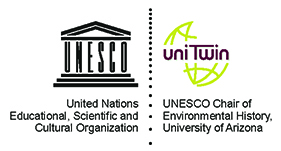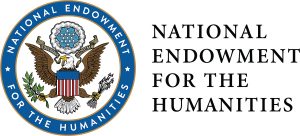Kettle Falls and the Kettle Falls Historical Center (Day 3)
The Kettle Falls Historical Center is located near the original encampment site used by tribes when harvesting the annual salmon runs. Kettle Falls is the most significant fishing site in the mid-Columbia valley. As different tribes gathered at Mission Point to catch salmon, the falls also became a meeting place for trade and information. The Blackfeet, for example, who travelled the farthest, traded buffalo hides for salmon. The fishing grounds at Kettle Falls have a history dating back at least 9000 years. As described by a sojourner to Kettle Falls in the mid-19th Century, "the salmon continue to arrive in almost incredible numbers for nearly two months…In fact, there is one continuous body of them, more resembling a flock of birds than anything else in their extraordinary leap of the fall." Teachers will visit the Historical Center, as well as stroll the interpretive trail to view St. Paul's Mission and the former sites of Kettle Falls and Fort Colville (now submerged).

Grand Coulee Dam and Visitors Center (Day 4)
Grand Coulee Dam represents the impulse to transform the Columbia River valley into an engine of production. At the same time, a set of moral justifications argued that the dam ensured regional prosperity during the Depression, advanced democratic ideals, and fulfilled those last phases of national destiny with a final push of westward expansion. The Grand Coulee Dam represented all these forces, from the national to the personal. At one level, the dam was among a set of public-works projects designed to employ people and to stimulate economic growth during economic depression. Thousands of laborers were drawn to the Grand Coulee construction site from the Midwest and Midsouth regions to work on the "miracle rising from the desert." At a second level, the Grand Coulee Dam was an expression of American destiny. As proclaimed by a promotional pamphlet from 1947, "The toil of slaves has not gone into the building of this monument to prosperity, but rather the willingness and pride of free men who have worked through the sheer joy of living." In addition to the Visitors Center, teachers will get an up-close look at the enormity and power of the Grand Coulee Dam.

Colville Tribal Museum (Day 5)
Our trip to the Colville Tribal Museum will focus on the legacies of the Grand Coulee Dam to indigenous peoples of the Pacific Northwest region. The museum was founded and is managed by the Colville Confederated Tribes who fund and manage the museum. The museum coordinator, Jennifer Ferguson (Colville Tribal member), will provide background to cultural and material practices by exploring artifacts and their meanings. The museum showcases the history of the Colville Confederated Tribes and the cultural, economic, and social impacts of Grand Coulee Dam. In her discussion of tribal histories, Jennifer will draw upon legends and folkways that she compiled for the Upper Columbia River Book of Legends. Upon this foundation, Ferguson will explore the impact of Grand Coulee Dam on the Colville Tribes. As personal accounts, photographs, and other material artifacts will suggest, this dam precipitated profound loss of cultural connections to the landscape. At the same time, Ferguson will explicate the often complex and unanticipated outcomes of the dam to tribal identity that will enrich and occasionally problematize easy generalizations.

EQUAL OPPORTUNITY STATEMENT
Endowment programs do not discriminate on the basis of race, color, religion, sex, national origin, disability, age, or sexual orientation. For further information, write to NEH Equal Opportunity Officer, 400 Seventh Street, S.W., Washington, D.C. 20506. TDD: 202/606 8282 (for the hearing impaired only).





